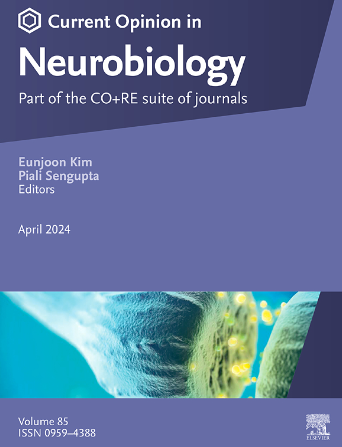Neural-circuit architecture underlying non-image-forming visual functions
IF 5.2
2区 医学
Q1 NEUROSCIENCES
引用次数: 0
Abstract
Perceiving and responding to environmental cues underpins survival and cognition. Light, emerging as one of the most ancient and powerful signals, has shaped life on Earth for billions of years. In mammals, light information is primarily detected by retinal photoreceptors: rods, cones, and intrinsically photosensitive retinal ganglion cells. While rods and cones enable image-forming vision, evolution has preserved and extended evolutionarily ancient yet critical non-image-forming visual functions, including circadian photoentrainment, pupillary light reflexes, and light-mediated modulation of metabolism, mood, and neurodevelopment. Although non-image-forming visual functions have been partially characterized in humans and model organisms, our understanding of the neural circuit mechanisms by which light orchestrates diverse behavior remains fragmented. The discovery of ipRGCs, combined with recent advances in systems neuroscience tools, has yielded critical breakthroughs in three domains: (1) light information encoding within photoreceptors, (2) systematic mapping of retinofugal pathways, and (3) central mechanisms of light-regulated physiological functions. These advances have progressively unraveled causal relationships between non-image-forming visual functions and their underlying eye-brain circuitry. This review summarizes groundbreaking progress in the three domains discussed above, highlighting key unresolved questions in the field.
非图像形成视觉功能的神经电路结构
对环境线索的感知和反应是生存和认知的基础。光是最古老、最强大的信号之一,数十亿年来,它塑造了地球上的生命。在哺乳动物中,光信息主要是通过视网膜感光器:视杆细胞、视锥细胞和本质上感光的视网膜神经节细胞来检测的。虽然视杆细胞和视锥细胞能够形成图像,但进化保留并扩展了进化上古老但关键的非图像形成视觉功能,包括昼夜节律光携带、瞳孔光反射、光介导的代谢、情绪和神经发育调节。虽然人类和模式生物的非图像形成视觉功能已经被部分表征,但我们对光协调各种行为的神经回路机制的理解仍然是碎片化的。iprgc的发现,结合系统神经科学工具的最新进展,在三个领域取得了重大突破:(1)光感受器内的光信息编码,(2)视网膜通路的系统映射,以及(3)光调节生理功能的中心机制。这些进步逐渐揭示了非图像形成视觉功能与其潜在的眼-脑回路之间的因果关系。本文综述了上述三个领域的突破性进展,突出了该领域尚未解决的关键问题。
本文章由计算机程序翻译,如有差异,请以英文原文为准。
求助全文
约1分钟内获得全文
求助全文
来源期刊

Current Opinion in Neurobiology
医学-神经科学
CiteScore
11.10
自引率
1.80%
发文量
130
审稿时长
4-8 weeks
期刊介绍:
Current Opinion in Neurobiology publishes short annotated reviews by leading experts on recent developments in the field of neurobiology. These experts write short reviews describing recent discoveries in this field (in the past 2-5 years), as well as highlighting select individual papers of particular significance.
The journal is thus an important resource allowing researchers and educators to quickly gain an overview and rich understanding of complex and current issues in the field of Neurobiology. The journal takes a unique and valuable approach in focusing each special issue around a topic of scientific and/or societal interest, and then bringing together leading international experts studying that topic, embracing diverse methodologies and perspectives.
Journal Content: The journal consists of 6 issues per year, covering 8 recurring topics every other year in the following categories:
-Neurobiology of Disease-
Neurobiology of Behavior-
Cellular Neuroscience-
Systems Neuroscience-
Developmental Neuroscience-
Neurobiology of Learning and Plasticity-
Molecular Neuroscience-
Computational Neuroscience
 求助内容:
求助内容: 应助结果提醒方式:
应助结果提醒方式:


